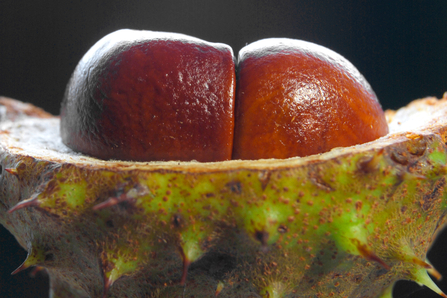
Horse chestnut conkers still in their capsule. Picture: Alan Price
Horse chestnut conkers lying on the grass in autumn. Picture: Gillian Day

Horse chestnut conkers still in their capsule. Picture: Alan Price
Originally native to the mountains of northern Greece and Albania, the horse chestnut tree was introduced to the UK in the late 16th or early 17th century, and has since become naturalised.
Conkers have been used as medicine for horses, as shampoo, and the Victorians used to make flour from them - but given they are mildly poisonous in large doses, it's not a recommended recipe. They are also poisonous to horses - despite the name - and many other native British animals, so playing conkers is probably one of the best uses they can be put to!
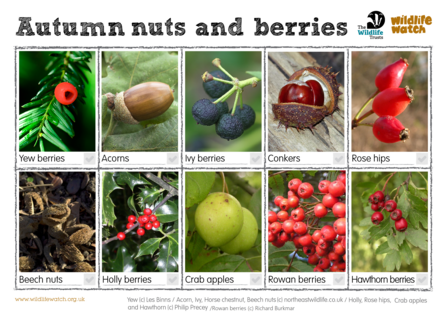
Autumn nuts and berries spotter sheet
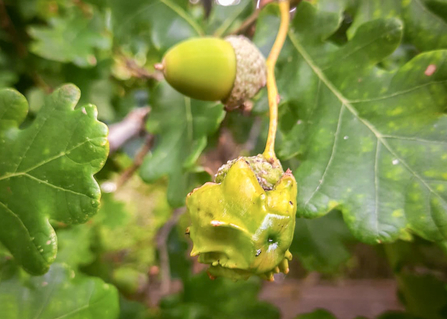
A knopper gall growing out of an acorn on an oak tree. Picture: Pete Hughes
Another famous seed to look out for this month is the acorn. Unlike conkers, the iconic nut of the oak tree is devoured by a huge range of birds, mice, badgers, squirrels and insects - not to mention humans: some people even make acorn coffee.
However one of the weirdest things that happens to acorns is knopper galls: when a tiny wasp called Andricus quercuscalicis lays her eggs in young acorns, it creates a large, knobbly growth that bursts out of the nut, which becomes a nursery for the tiny larvae inside. From the littlest acorns…!
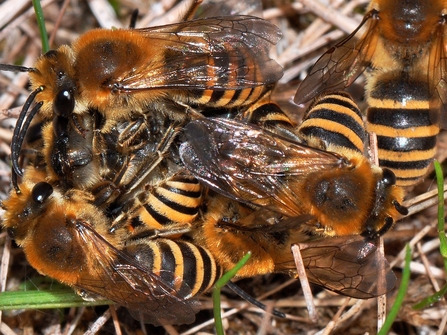
Ivy bees at BBOWT's Dry Sandford Pit nature reserve. Picture: Peter Creed
Another fascinating insect-plant symbiosis to look out for this month is the ivy bee (also called ivy mining bees): these small bees were first recorded in the UK in 2001 but have been spreading north and are now found across our area. They feed mainly on the nectar of ivy when it flowers from September onwards. Look out for ivy bees entering their tunnels in sandy banks or loose soil at our Dry Sandford Pit nature reserve near Abingdon.
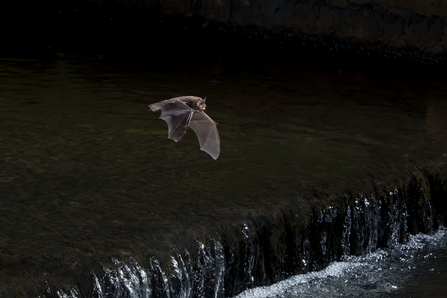
A Daubenton's bat in flight. Picture: Dale Sutton/2020Vision
While many mammals start mating when the weather warms up in spring, the creatures of the night start getting amorous now as summer ends. Male bats of most species will be chasing females over the next month using a host of special calls including purrs, clicks and buzzing. Our woodland reserves such as Warburg near Henley and Bowdown Woods in Berkshire have many species of bat, but you can also just go outside and look up on a warm September evening in almost any part of the country for a good chance to see bat action.
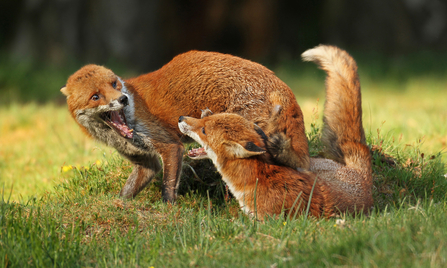
Foxes fighting. Picture: Jon Hawkins/ Surrey Hills Photography
While bats are getting loved up, fox family units are starting to break down: this year's cubs, born in March, are now fully grown and hunting independently. Just like human families with grown-up children, arguments are liable to break out, and so the cubs start to leave the den and hunt for mates to start their own families. Being nocturnal mammals, this action all happens at night, so look out for the young adults stepping out on their own on warm evenings.
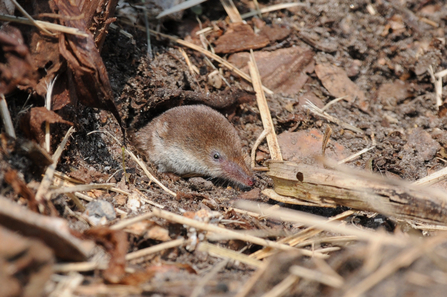
Common shrew. Picture: Carl Wright
From May to September, female common shrews have as many as four litters of up to seven young, so by this time of year the population is at its absolute peak. You can sometimes see mother shrews and their young in 'caravans', where each one holds onto the tail of the one in front!
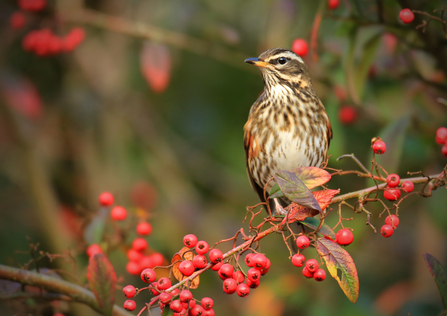
A redwing. Picture: Jon Hawkins/ Surrey Hills Photography
September can be one of the quietest times of year for birds – literally: the noisy breeding season for most species has finished, summer visitors are migrating south, and many permanent residents are moulting feathers which makes them more vulnerable, so they tend to stay inconspicuous.
One bird that is conspicuous is the colourful and noisy redwing, which starts to arrive in large numbers from Scandinavia to overwinter in the UK. Look out for flocks of them alighting on rowan trees to scoff the bright orange berries.
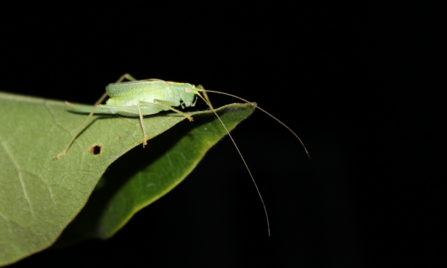
Oak bush cricket. Picture: Getty Images
While most bush crickets tend to stay well away from human environments, the delicate oak bush cricket is attracted to light at night, and often makes its way into houses at this time of year. A modest insect, the male doesn't sing like other grasshoppers and crickets, but instead drums his foot gently on the surface of leaves to attract a female. If you find one in your house, you can catch it gently in your hands or a container and let it outside.
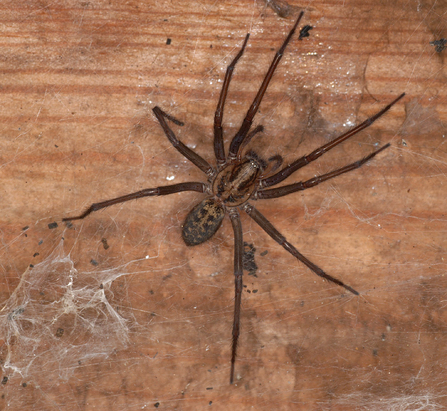
The giant house spider (Tegenaria duellica). Picture: Malcolm Storey
Another visitor to our houses at this time of year, which might be somewhat less welcome, is the harmless house spider. Actually, several species of the Tegenaria genus migrate inside warm, dry buildings in the autumn, and we often see males running across the floor in their search for a mate. These spiders are all harmless and can be safely released outside. As for the old wives' tale that conkers keep spiders away - sorry, there's no scientific evidence for it yet.
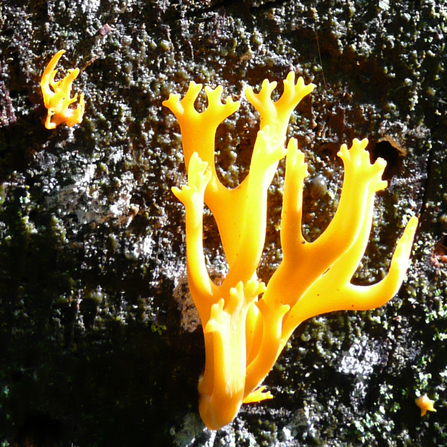
Yellow staghorn fungus. Picture: Karen Lloyd
One of the other hallmarks of the autumn is fungi. As it gets colder and wetter, this is a great time of year to look out for a host of mushrooms and toadstools, but one of the most striking is the bright yellow stagshorn (Calocera viscosa). This small but pretty fungus sprouts from dead and rotting wood. Our Snelsmore Common Country Park nature reserve is a great place to look for this and lots of other autumn-fruiting fungi. If you find any good ones, let us know on social media!
Sign up below to receive the latest news from BBOWT, tips about how you can help wildlife, plus information on how you can get involved.